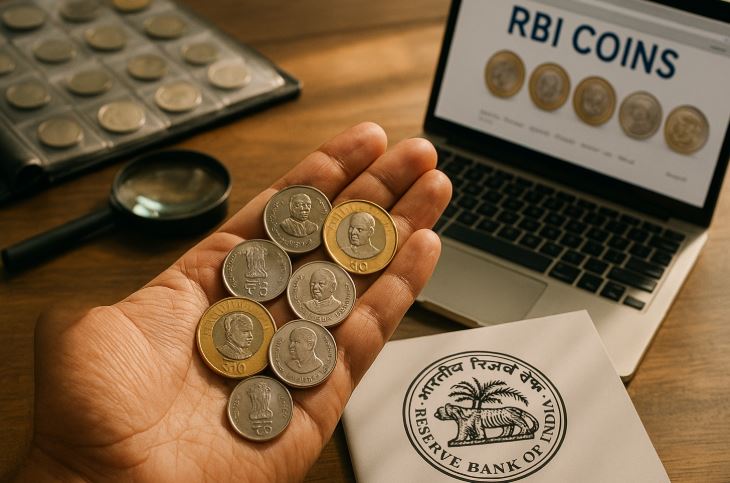The Reserve Bank of India (RBI) plays a crucial role in steering the Indian economy, with the repo rate being one of its most powerful tools.
Defined as the interest rate at which the RBI lends to commercial banks, the repo rate directly influences borrowing costs, liquidity, and inflation.
This blog explores the intricacies of the RBI monetary policy repo rate, the significance of repo rate decisions, and their widespread impact on sectors like real estate, banking, and manufacturing. Stay informed about how these decisions shape India’s economic future.
What is the Repo Rate?
The repo rate is the interest rate at which the Reserve Bank of India lends short-term funds to commercial banks in exchange for government securities.
It’s a crucial tool in the RBI’s monetary policy, directly influencing liquidity and the cost of credit in the economy.
This rate plays a dual role: controlling inflation and fostering economic growth. When inflation is high, the RBI may increase the repo rate to reduce liquidity and curb excessive spending.
Conversely, during economic slowdowns, the RBI might lower the repo rate to make borrowing cheaper, encouraging investments and consumption.
The repo rate impacts individuals, businesses, and the broader financial system. For individuals, it determines interest rates on loans like home loans and personal loans.
For businesses, it affects the cost of capital, influencing decisions about expansion and investment. Moreover, the repo rate serves as a signal to the financial markets about the RBI’s stance on monetary policy.
RBI Monetary Policy Repo Rate

The RBI Monetary Policy Repo Rate is one of the most influential tools used by the Reserve Bank of India (RBI) to regulate liquidity, control inflation, and stimulate economic growth.
The repo rate, or repurchase rate, is the interest rate at which commercial banks borrow funds from the RBI for short-term needs. This tool directly influences the cost of borrowing and the availability of credit in the economy.
The Monetary Policy Committee (MPC), led by the RBI Governor, meets bi-monthly to decide the repo rate based on current economic conditions.
Factors such as inflationary trends, GDP growth, and global economic outlook are considered during these deliberations. For instance, if inflation is high, the RBI may increase the repo rate to reduce the money supply.
Conversely, during an economic slowdown, a reduction in the repo rate can encourage borrowing and spending, boosting overall growth.
The repo rate acts as a benchmark for other lending rates in the economy, affecting home loans, personal loans, and business loans.
As of December 2024, the repo rate remains steady at 6.5%, reflecting the RBI’s focus on balancing inflation control with growth stimulation. It plays a pivotal role in determining the trajectory of the Indian economy.
How Does the RBI’s Monetary Policy Committee Decide the Repo Rate?
The Monetary Policy Committee (MPC) is responsible for setting the repo rate. It is composed of six members, including the RBI Governor, and meets every two months to review economic indicators. Their decisions are guided by the dual mandate of controlling inflation and supporting growth.
The MPC considers a range of factors before adjusting the repo rate. Inflation trends, as indicated by the Consumer Price Index (CPI), are a critical determinant. If inflation exceeds the target range of 4% ± 2%, the RBI typically increases the repo rate.
On the other hand, economic growth metrics, like GDP and industrial production, influence decisions to lower the rate during periods of slow growth.
External factors, such as crude oil prices, global economic conditions, and currency fluctuations, are also evaluated. For example, rising oil prices can push inflation higher, prompting a tighter monetary policy stance. Similarly, global monetary trends, like rate hikes by the US Federal Reserve, may impact the MPC’s decisions.
The process is transparent, with the RBI publishing the MPC’s decisions and the rationale behind them. This ensures clarity for stakeholders, including businesses, investors, and consumers, on the factors influencing policy changes.
What Are the Recent Changes in the Repo Rate Announced by the RBI?

In its December 2024 meeting, the Monetary Policy Committee of the RBI decided to keep the repo rate unchanged at 6.5%. This decision reflects the central bank’s cautious approach to balancing inflation control with the need for economic growth.
Recent data showed that retail inflation had moderated, giving the RBI some room to maintain the current rate.
The central bank emphasized that future decisions would depend on macroeconomic indicators, such as inflation trends, credit growth, and external risks.
By maintaining the repo rate, the RBI aims to support sectors like manufacturing, housing, and infrastructure, which benefit from stable borrowing costs.
This decision impacts various stakeholders. Borrowers can expect their loan EMIs to remain steady, while businesses may continue to access credit at existing rates. However, depositors may see limited increases in interest rates for savings accounts or fixed deposits.
The RBI’s focus on stability indicates its commitment to fostering sustainable economic recovery while keeping inflation within manageable limits.
How Does the Repo Rate Impact Inflation and Economic Growth?
The repo rate is a key lever for managing inflation in the economy. When inflation exceeds the RBI’s target range, increasing the repo rate becomes an effective measure.
A higher repo rate makes borrowing costlier for commercial banks, leading to a reduction in the money supply. This, in turn, lowers consumer spending and dampens demand, helping to stabilize prices.
For example, during periods of high inflation driven by rising food or fuel prices, the RBI raises the repo rate to discourage excessive borrowing and consumption.
This action has a cascading effect on industries, as reduced spending can lower production demand, ultimately cooling inflationary pressures.
Conversely, in a deflationary environment, where prices fall and economic activity slows, the RBI reduces the repo rate to stimulate demand. By making loans more affordable, businesses and consumers are encouraged to borrow, invest, and spend, driving economic recovery.
The RBI’s ability to fine-tune the repo rate ensures that inflation remains within the desired range while supporting economic growth, making it one of the most potent tools in its monetary arsenal.
What Role Do CRR and SDF Play Alongside the Repo Rate?

The Cash Reserve Ratio (CRR) is the proportion of a bank’s total deposits that must be maintained as reserves with the RBI. Unlike the repo rate, the CRR directly controls the amount of money that banks can lend. A higher CRR means banks have less money to lend, tightening liquidity in the economy.
For instance, during inflationary periods, the RBI may increase the CRR to absorb excess liquidity, reducing borrowing and spending. Conversely, a lower CRR boosts lending capacity, facilitating credit flow and stimulating economic growth. The CRR complements the repo rate in managing money supply and ensuring financial stability.
The Standing Deposit Facility (SDF) is a relatively new monetary policy tool introduced to manage surplus liquidity in the banking system. Unlike the repo rate, the SDF does not require collateral for transactions. It allows the RBI to absorb excess funds from banks without impacting the availability of government securities.
The SDF serves as a floor for the interest rate corridor, ensuring that market rates do not fall below a certain level. This tool is particularly useful in situations of excessive liquidity, such as during fiscal stimuli or foreign capital inflows. Together with the repo rate, CRR, and other tools, the SDF helps the RBI maintain a balanced and efficient monetary policy framework.
How Do Repo Rate Changes Affect Borrowers and Lenders?
Repo rate changes directly impact loan Equated Monthly Installments (EMIs), making them a major concern for borrowers. When the RBI reduces the repo rate, banks often lower their lending rates.
This means borrowers with floating-rate loans, such as home loans or car loans, benefit from reduced EMIs. For instance, a 50 basis point reduction in the repo rate can translate to significant savings over the loan tenure.
Conversely, when the RBI raises the repo rate, borrowing costs increase, and EMIs become higher. Fixed-rate loans remain unaffected, but floating-rate borrowers experience immediate impacts. Banks usually pass on these changes to their customers through the Marginal Cost of Funds-based Lending Rate (MCLR) or other benchmarked rates.
Borrowers should keep an eye on repo rate trends, as they influence loan affordability and household budgeting. Additionally, lenders must adjust their strategies, balancing profitability with competitive interest rates to attract and retain borrowers.
Do Repo Rate Adjustments Impact Savings Interest Rates?

Yes, repo rate adjustments indirectly affect savings interest rates. When the RBI increases the repo rate, banks raise deposit rates to attract more funds and maintain liquidity. This is good news for savers, as fixed deposit and recurring deposit interest rates tend to increase.
On the other hand, when the repo rate is reduced, banks may lower deposit rates to align with reduced lending rates. This can impact individuals who rely on interest income from savings. However, banks often take time to adjust deposit rates, ensuring a gradual transition for customers.
For both borrowers and savers, repo rate changes signify a shifting financial landscape, influencing personal and business financial decisions.
What Were the Key Takeaways from the Recent RBI MPC Meeting?
The December 2024 Monetary Policy Committee meeting left the repo rate unchanged at 6.5%, emphasizing a balanced approach to inflation control and growth stimulation. This decision had varied impacts across sectors.
The real estate sector benefits from stable interest rates, as lower EMIs encourage homebuyers. Similarly, auto sales are expected to gain momentum due to unchanged borrowing costs.
Sectors like manufacturing and MSMEs (Micro, Small, and Medium Enterprises) also stand to benefit from steady credit availability.
However, banks and financial institutions may face tighter margins, as they balance lending rates with deposit rate adjustments. Deposit-heavy industries, like public sector banks, might see slower growth in savings products due to unchanged repo rates.
The meeting highlighted the RBI’s cautious stance, indicating that future decisions would depend on inflation trends, global economic conditions, and credit growth.
What to Expect in the Next RBI Monetary Policy?

The trajectory of the repo rate in upcoming RBI monetary policy meetings will depend on a host of factors. Analysts suggest that if inflation remains within the target range of 4% ± 2%, the RBI is likely to maintain its current rate of 6.5%.
However, any significant rise in inflation, driven by global oil prices or adverse weather impacting food production, could prompt a rate hike to stabilize prices.
Conversely, a sharp slowdown in economic activity might encourage the RBI to cut the repo rate to stimulate growth. Global economic trends, such as monetary tightening or easing by central banks like the US Federal Reserve, also play a critical role in shaping RBI’s decisions.
The central bank has reiterated its commitment to being data-driven, emphasizing the need to strike a balance between price stability and economic growth.
Stakeholders, including borrowers, businesses, and investors, will closely monitor future policy announcements to align their financial plans accordingly.
Conclusion
The RBI’s repo rate decisions are pivotal in maintaining economic stability, controlling inflation, and promoting growth.
By carefully calibrating this rate, the central bank ensures that both consumers and businesses thrive in a balanced economic environment.
The repo rate impacts everything from individual loan EMIs to corporate investments, underscoring its far-reaching significance.
As global and domestic factors evolve, the RBI’s monetary policy will remain instrumental in navigating challenges and capitalizing on opportunities.
Staying informed about repo rate updates empowers stakeholders to make better financial decisions and adapt to changing economic conditions. Keep tracking the RBI’s moves to understand their long-term implications on the economy.
FAQs on RBI Monetary Policy and Repo Rate
How Often Does the RBI Change the Repo Rate?
The RBI reviews the repo rate every two months during its Monetary Policy Committee (MPC) meetings. However, extraordinary changes can occur between scheduled reviews during economic emergencies.
Can Repo Rate Adjustments Directly Influence Inflation?
Yes, repo rate changes are one of the primary tools to manage inflation. By altering borrowing costs, the RBI can control liquidity and demand in the economy, influencing price levels.
What Are the Tools Other Than Repo Rate in Monetary Policy?
Apart from the repo rate, the RBI uses tools like Cash Reserve Ratio (CRR), Reverse Repo Rate, Standing Deposit Facility (SDF), and Open Market Operations (OMO) to regulate money supply and stabilize the economy.
How Are Fixed Deposit Rates Impacted by Repo Rate Changes?
Fixed deposit rates tend to rise when the repo rate increases, as banks need to attract deposits to maintain liquidity. Conversely, a repo rate cut may lead to lower FD rates over time.
Why Is Repo Rate Important for Home Loan Borrowers?
For home loan borrowers with floating interest rates, repo rate changes directly impact their EMIs. A lower repo rate reduces EMIs, making loans more affordable.
How Can the Repo Rate Affect the Stock Market?
Repo rate decisions influence investor sentiment. A stable or reduced repo rate is often viewed positively, boosting equities, while rate hikes can lead to cautious market reactions.
What is the Difference Between Repo Rate and Reverse Repo Rate?
The repo rate is the rate at which the RBI lends to banks, while the reverse repo rate is the rate at which banks park surplus funds with the RBI. Both rates are critical for managing liquidity.




